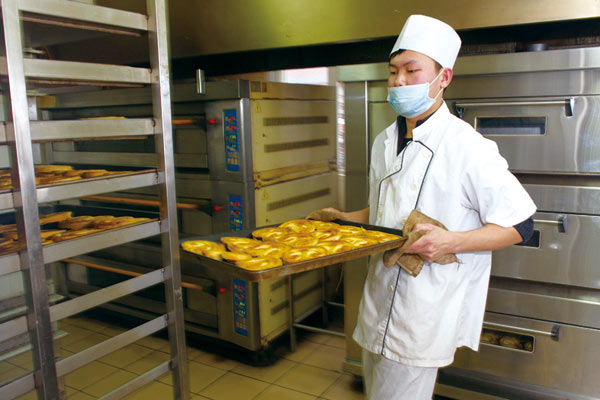The butterfly effect
Updated: 2016-03-12 01:13
By
It’s no secret that the weather can be a baker’s worst enemy, and during rainy winter days, the inexperienced ones may struggle to achieve the optimal level of moisture in their dough.
(China Daily USA)
|
||||||||

Having been in the pastry business for more than 40 years, Lin served his apprenticeship with Bian Xinghua, one of China’s most famous pastry chefs who was awarded gold medal at the 17th Culinary Olympics, held in 1988 in Germany. Lin remembered that Deda sold its first bag of butterfly pastry in the 1970s when China first opened up to the world.
Called Cosmopolitan Cafe when it was founded in 1897, Deda earned itself a reputation for being one of the city’s best western restaurants serving authentic German cuisine. It was renamed Deda, meaning “German feast” after the government took over the business in 1949.
Lin said that ingredients in the past were limited and often of mediocre quality, but customers were still easily satisfied with his products. These days, however, with the influx of foreign bakeries around the city and consumers’ knowledge in the craft of making pastries, people are far harder to please.
Deda is not the only place in Shanghai that sells the butterfly pastry. From the snack counters in 24-hour convenient stores to the silver trays at hotel restaurants, it seems that the city can never get enough of it. The best ones are often deemed by the locals as those that are freshly made by home-grown bakeries.

 Beijing sees blue sky during the two sessions
Beijing sees blue sky during the two sessions
 Fukushima five years on: Searching for loved ones
Fukushima five years on: Searching for loved ones
 Robots ready to offer a helping hand
Robots ready to offer a helping hand
 China to bulid another polar ship after Xuelong
China to bulid another polar ship after Xuelong
 Top 10 economies where women hold senior roles
Top 10 economies where women hold senior roles
 Cavers make rare finds in Guangxi expedition
Cavers make rare finds in Guangxi expedition
 'Design Shanghai 2016' features world's top designs
'Design Shanghai 2016' features world's top designs
 Cutting hair for Longtaitou Festival
Cutting hair for Longtaitou Festival
Most Viewed
Editor's Picks

|

|

|

|

|

|
Today's Top News
What ends Jeb Bush's White House hopes
Investigation for Nicolas's campaign
Will US-ASEAN meeting be good for region?
Accentuate the positive in Sino-US relations
Dangerous games on peninsula will have no winner
National Art Museum showing 400 puppets in new exhibition
Finest Chinese porcelains expected to fetch over $28 million
Monkey portraits by Chinese ink painting masters
US Weekly

|

|








